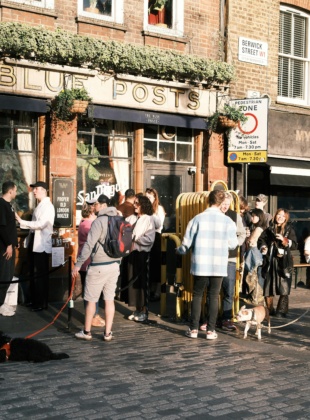A bad weekend for the Tories. But, have we seen it before?

The latest polling evidence is bad news for the Conservative Party, but no one should be surprised. We have been well aware of the phenomenon behind the worst Conservative polling performance since 2014. A large chunk of the Conservative Party’s vote is pegged to their voters interpretation of the successful implementation of Brexit. But for that reason, we have also seen the pattern behind these terrible figures before.
There is no getting away from the fact the party in government is now on 29% of the vote. In a little over two months the party has lost a tenth of the voting public (in late February the Conservatives were on 40%). But, I want to draw your attention to what happened to the party’s standing in the polls after Chequers.
The Conservatives fracture, but Labour fails to capitalise
Last summer, the Conservatives had a minimal poll lead. Right up until the fallout from the Chequers agreement whereupon the Tory vote dropped 6 points in a matter of weeks. Similarly, this spring the two parties were level pegging until a Brexit delay became inevitable and the Conservatives once again lost 6 points.
In both cases Labour benefits but does not capitalize from the governing party losing support. After Chequers Labour’s poll rating remain unchanged, and this week we only saw their vote edge up by the smallest margin. In short, the Labour lead of 4-points last summer and their lead of 7-points now is entirely a product of the Tory vote fracturing.
Where are these voters going?
Here’s where we start noticing some differences. The Chequers experience was simple. Disaffected Leavers displaying dissatisfaction by moving to UKIP. Amongst Remainers the Tory vote only dropped by 2 points, but amongst Leavers it dropped by 11 points.
This week’s results were different. This time the Tories lost votes pretty evenly amongst Remainers (down 6 points) and Leavers (down 7 points). The lack of competence probably angering the former with the lack of delivery probably angering the latter.
How have they hit such a low?
The new political climate is also very different. We were still going through the post-2017 ‘era’ where two-party politics appeared to have returned with force. Even after Chequers the combined Labour-Tory vote share was 76%. Now it’s only 65%. Both parties have shed a large number of votes, but relatively few between each other.
Conservative Leavers are now looking towards UKIP and the Brexit Party to register their discontent. Remainers of all sides are looking at Change UK. I don’t even want to contemplate how a first past the post election will look when it is effectively catering towards two electorates with such volatile electoral preferences.
To some degree this is reparable for the Tories, but the window for that is closing. After the initial knock post Chequers the Tories recovered their lost ground, and by the end of conference season they were more consistently back in the lead. But this is different.
There is only one way for the party to get back in the lead, and it’s to re-take control of Brexit. Unfortunately for the Tories this is exactly what the party has failed to do for four months now.




